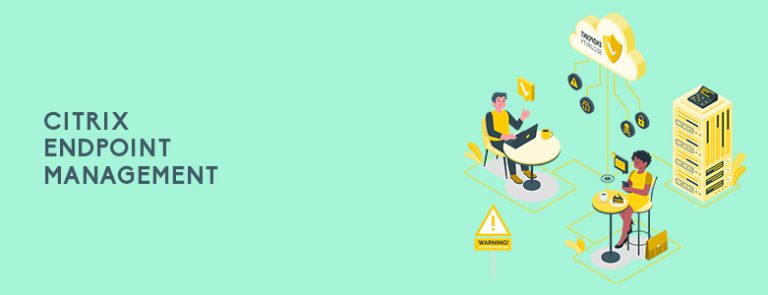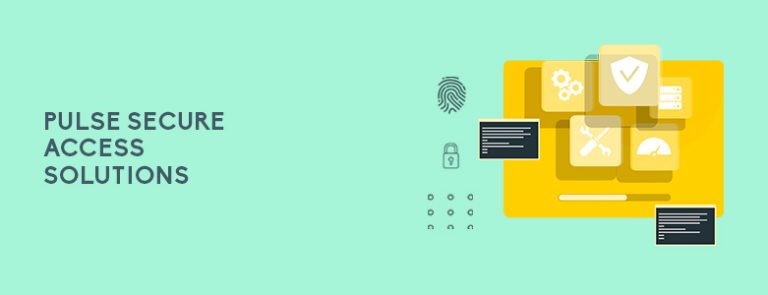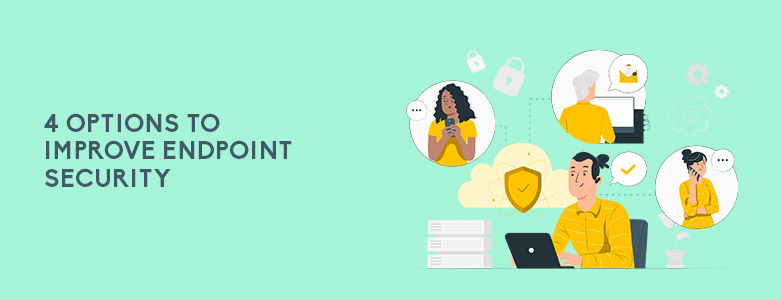What are your options in improving endpoint security?
- Forcepoint Data Loss Prevention
- Citrix Endpoint Management
- Trend Micro Endpoint Security
- Pulse Secure Access Solutions
Whether you’re adding more offices or hiring additional remote workers, your network-connected devices will increase over time. With heavily monitored network servers and websites, hackers shift their focus to these endpoints to penetrate your system and obtain their goals. To prevent this from happening, you can follow these options to improve endpoint security. Keep on reading.
Forcepoint Data Loss Prevention

One of your options in securing endpoint devices is Forcepoint Data Loss Prevention (DLP). It is a security software that allows organizations to have control and visibility over intellectual property, applications, or sensitive data to protect against accidental exposure or leakage, even when off your corporate network.
For businesses that implement Bring-Your-Own-Device (BYOD) policies, Forcepoint allows for secure data exchange through advanced detection controls that follow a risk-based approach. The software continually inspects user behavior in order to identify novel threats to security. It can provide specific risk scores and tailor-fit user controls in order to dynamically address suspicious behavior in real-time. Incidents are prioritized based on a calculated risk level so that the more pressing threats to security will be addressed faster.
Forcepoint focuses its endpoint security features on the user. This means that employees will be provided with critical cybersecurity training through a DLP coaching dialog and in-app tutorials that teach them how to self-remediate data risks. With full monitoring over web uploads, HTTPs, and cloud services, your team will be provided with ample protection when transferring files online or using cloud-sharing apps.
Citrix Endpoint Management

Nowadays, most employees prefer to access multiple devices to perform their work tasks. But with so many touchpoints, securing these devices might be harder for IT teams. Formerly known as XenMobile, Citrix Endpoint Management is a unified endpoint management technology that can solve this problem. Employees can easily enroll their devices to ensure that they access work resources safely. The benefit of this is that personal data can be isolated from company data, so the latter is protected without sacrificing employees’ privacy.
This endpoint management technology solution can help secure devices by using predictive analytics and machine learning technology. Through this process, dangerous user behavior can be detected and addressed in a timely manner. The Secure Mail feature also allows employees to access their email, calendars, and contacts on their mobile devices on the go. Citrix Endpoint Management can be used on its own or with Citrix Workspace, a complete workplace solution for organizations.
Trend Micro XDR

If you want to have visibility and security beyond your endpoints, then the solution you need is Trend Micro XDR (Extended Detection and Response). This technology automatically collects and analyzes your data across your endpoints, emails, servers, and networks to scan for threats faster.
Compared to endpoint detection and response (EDR), XDR has a wider scope of threat detection because it is not limited to the managed endpoints. Trend Micro XDR can provide you all the answers you need in one place such as:
- How the device got infected
- Where the threat came from and how it spread
- The users who are exposed to the same threat
Another benefit of Trend Micro XDR is that it also allows you to outsource experts from Trend Micro. They can help analyze the security alerts you receive and assist you in remediating the threats quickly. This option is great if your company doesn’t have a dedicated security team to monitor and handle the issues.
Pulse Secure Access Solutions

Pulse Connect Secure and Pulse Policy Secure are two solutions that can help your IT Team gain visibility to work devices while still maintaining productivity when implementing BYOD protocols.
Pulse Connect Secure is a mobile VPN you can use to provide secure access from work devices to data and apps in the cloud or on-premise data center. This way, you can authenticate and authorize the devices before they gain access to your company data.
This can be done through dynamic and adaptive multi-factor authentication methods. Your IT Team can also set access policies depending on the role of the user, so the data access is limited to what is essential for the job. Employees can access company resources without the need for software, but only a web browser.
Pulse Policy Secure gives you visibility to endpoint devices so you can implement policies and detect threats faster. It classifies all the endpoint devices and provides behavior analytics. By building baseline behavior profiles, it can detect suspicious behavior. It also implements Zero Trust Principles through authenticating a user, checking the security posture of a device, and only granting the least privilege access.
Key Takeaway
With remote work becoming the norm, endpoint security has become more important for companies. These end-user devices can become an entry point for threats and cause data loss and theft. That’s why you should implement endpoint security solutions to help prevent this problem.
If you’re interested in more options to improve endpoint security, you can contact us here at CT Link! We can help you identify your potential attack surfaces, create security policies based on your needs, run pilot tests, deploy endpoint security solutions, and provide analysis and recommendations.


One Response